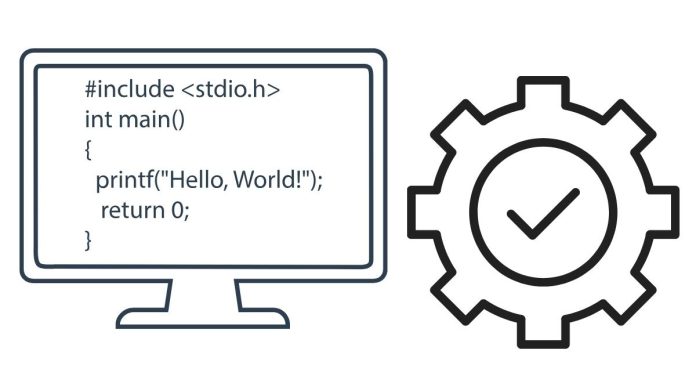In C programming, working with strings is a common task, and one of the essential functions available for string manipulation is strchr(). This function is part of the C standard library, defined in the header file <string.h>. The strchr() function is used to locate the first occurrence of a character in a string, making it a valuable tool when you need to search for a specific character.
In this blog post, we’ll dive deep into the strchr() function, explaining its syntax, usage, and some practical examples.
What is the strchr() Function?
The strchr() function is designed to search for a character within a string. It returns a pointer to the first occurrence of the character in the string, or NULL if the character is not found.
Syntax of strchr()
char *strchr(const char *str, int c);
str: A pointer to the null-terminated string in which you want to search for the character.c: The character you’re searching for. Note that this is passed as anint, but it represents a character, so it’s often written in single quotes (e.g.,'a').- Return Value: The function returns a pointer to the first occurrence of the character
cin the stringstr, orNULLif the character is not found.
Key Points About strchr()
- Null-Terminated Strings: Since C strings are null-terminated (i.e., they end with a
\0),strchr()will search until it encounters this null character. - Case Sensitivity: The function is case-sensitive, meaning that searching for
'A'will not match'a'and vice versa. - Returns a Pointer: The function returns a pointer to the character in the string. If the character is not found, it returns
NULL.
Example 1: Basic Usage of strchr()
Let’s start by using strchr() in a simple example to search for a character in a string.
#include <stdio.h>
#include <string.h>
int main() {
char str[] = "Hello, world!";
char *result = strchr(str, 'o');
if (result != NULL) {
printf("Character found: %c\n", *result);
printf("Substring from the first occurrence of 'o': %s\n", result);
} else {
printf("Character not found.\n");
}
return 0;
}
Explanation:
- The string
"Hello, world!"is defined, and we search for the first occurrence of the character'o'. - The
strchr()function returns a pointer to the first'o'in the string. - If the character is found, we print the character and the substring starting from that position.
Output:
Character found: o
Substring from the first occurrence of 'o': o, world!
Example 2: Character Not Found
Now, let’s see what happens when the character is not found in the string.
#include <stdio.h>
#include <string.h>
int main() {
char str[] = "Hello, world!";
char *result = strchr(str, 'z');
if (result != NULL) {
printf("Character found: %c\n", *result);
} else {
printf("Character not found.\n");
}
return 0;
}
Explanation:
- Here, we search for the character
'z', which doesn’t exist in the string. - Since
strchr()returnsNULLwhen the character is not found, the program prints “Character not found.”
Output:
Character not found.
Example 3: Searching for the Null Terminator
Another interesting use of strchr() is to search for the null terminator \0 in a string. This might be useful when you want to get the position of the end of the string.
#include <stdio.h>
#include <string.h>
int main() {
char str[] = "Hello, world!";
char *result = strchr(str, '\0');
if (result != NULL) {
printf("Null terminator found at position: %ld\n", result - str);
}
return 0;
}
Explanation:
- In this example, we search for the null terminator
\0, which marks the end of the string. - The function returns a pointer to the null terminator, and we subtract the base pointer
strfrom the result to get the position of the null terminator.
Output:
Null terminator found at position: 13
Common Pitfalls to Avoid
- Passing an Invalid String: Make sure that the string passed to
strchr()is properly null-terminated. If the string is not null-terminated, the function may not behave as expected. - Confusing
strchr()withstrstr(): Whilestrchr()searches for a single character,strstr()is used to search for a substring. If you need to find a substring, you should usestrstr()instead. - Modifying Strings: Since
strchr()returns a pointer to the first occurrence of the character, be careful when modifying the string through this pointer. If the string is constant or unmodifiable, modifying it could lead to undefined behavior.
Practical Applications of strchr()
- Validating Input: If you want to check whether a specific character exists in user input (such as a password or email),
strchr()is an efficient way to do so. - String Tokenization: While
strtok()is often used for tokenization,strchr()can help when you need to split strings based on specific delimiters or identify where the token begins. - Parsing Data: In data parsing, especially when reading from files or processing user input, you can use
strchr()to locate important characters (like commas, semicolons, or other delimiters) to break down data into manageable pieces.
Conclusion
The strchr() function is a simple yet powerful tool for searching characters in strings. Whether you’re looking for a specific character, checking for the presence of a delimiter, or navigating through user input, strchr() offers a clean and efficient solution. By understanding its syntax, behavior, and common pitfalls, you can leverage strchr() effectively in your C programs.


